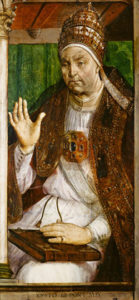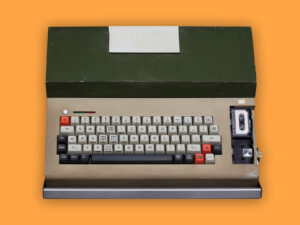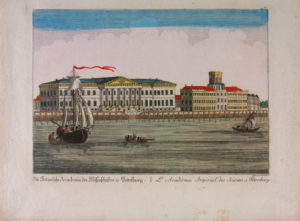
Series: Book Printing in Europe
Not everyone was pleased about the invention of book printing. The church and some universities were skeptical.
The printing trade in Europe was one of the first business sectors governed by capitalist principles, whereas the invention and subsequent development of book printing in East Asia were motivated less by financial interests than religious considerations or initiatives of monarchs devoted to the dissemination of certain texts. Thus it comes as no surprise that the earliest printed products were texts of a religious nature. The oldest woodblock print, a Buddhist Dharani-Sutra scroll probably produced in China between 704 and 751 and measuring only eight centimeters in height but six meters in length, was discovered in southeastern Korea in 1966. The first Japanese prints in the form of short scrolls featuring Buddhist texts date back to 770 and were produced as accompaniments to roughly a million small wooden pagodas. The oldest printed book, the Diamond Sutra, which is now held at the British Museum in London, originated in China in 868. The five-meter-long scroll features five woodblock prints presented side by side. The work is dated but does not contain the first colophon, as some scholars have claimed. The first known example of a colophon appeared in China, in 1071.
While Arabian woodblock prints are known to have existed since the tenth century, religiously motivated respect for the written word handed down in manuscript form prevented the establishment of printing firms in Islamic countries until well into the eighteenth century. In 1727, Ahmed III authorized Sait Efendi and Ibrahim Müteferrika to open a printing shop in Istanbul and print works in Arabic, yet they were still not permitted to print works relating to Islamic studies. The first woodblock prints in Europe were not produced until the 1420s.
Given what we know about the early knowledge acquired in East Asia and the Arab regions, it is reasonable to ask about Gutenberg’s actual contribution to the art of printing. Was everything already in place when he arrived on the scene? While he did not invent printing per se, Gutenberg’s invention surpassed what had been achieved in preceding centuries. Not only did he develop the printing press — the so-called platen press — which played a dominant role in the printing process until well into the nineteenth century. He also invented the composing stick used in typesetting as well as a hand-casting tool and a stable metal alloy consisting of eighty-three percent lead, nine percent tin, six percent antimony, and one percent each of copper and iron. Because the alloy cooled quickly when exposed to air, missing letters could be recast without delay and inserted into the text. It is certainly reasonable to credit Gutenberg with contributing significantly to perfecting the technology involved in the book-printing process, although subsequent generations refined and improved a number of elements.

The Diamond Sutra is the oldest printed book. It was produced in China in 868. Photo: British Library
Book printing was not always welcomed with open arms in Europe. The Church feared that heresies would be disseminated, primarily in vernacular publications. Pope Sixtus IV was also concerned about the inexperience of “weak women,” who now immersed themselves in the Bible. Yet such worries were outweighed by praise for the rapid production of identical texts and by the fact that ever more people could now afford to buy books. Of the thirty-two most important urban printing centers in existence before 1475, three were university cities, seventeen were diocesan seats, seven were both, and five were neither, which clearly indicates that the Church had quickly abandoned its prejudices and begun to exploit the new technology for its own purposes. Church dignitaries often encouraged book printing because it gave clerics access to standard, carefully edited texts (Bibles, missals, and breviaries). Moreover, it was cheaper to supply an entire diocese with printed materials than with handwritten copies. Poorly paid pastors in rural areas could hardly afford to purchase fully updated handwritten missals. The edition sizes of missals and breviaries were often negotiated with Church officials, thus ensuring that costs could be minimized and risks avoided. The Church administration required an enormous volume of small publications, such as indulgence forms, of which tens of thousands of copies could now be printed quite easily. Liturgical materials were produced above all in Venice, where missals for some thirty European dioceses outside of Italy, from Spain to Poland, were printed.
It is astonishing to realize that a number of universities initially had reservations about book printing. Although every university city in Germany, with the exception of Greifswald, had a printing shop in the fifteenth century, publications by faculty members were quite rare. That changed dramatically in the sixteenth century. Of the 240 professors on the faculty of the schools of art and theology at the University of Cologne, for instance, only twelve had the fruits of their work printed. Of the eighty jurists who taught at the School of Law in Cologne, three published one work each, and another two. The situation was much the same in Paris and Perugia. Books were used, but few were written.
Book printing spread rapidly in Europe. Beginning in Mainz, it moved within just a few decades to other cities, including (to mention only a few) Bamberg (1459/69); Strasbourg (1459/60); Cologne (1464/66); Basel and Rome (1467); Augsburg (1468); Venice (1469); Nuremberg and Paris (1470); Utrecht (1473); Valencia (1474); Breslau and Lübeck (1475); Brussels, Cracow, and Pilsen (1476); London (1477); Stockholm (1483); and even to Istanbul (1492), where the first press was installed by Jewish immigrants who had been expelled from Spain. In Switzerland, the first books were printed in Basel, followed by others in Beromünster (1470/73), Burgdorf (1475), Geneva (from 1478), Zurich (1479/81), Rougement (1481/85) and Lausanne (1493).
German printers often played a role in the spread of book printing. Berthold Ruppel, the first printer in the city of Basel, worked as a journeyman under Gutenberg. Adam Steinschaber, the first printer in Geneva, came from Franconia. Two German printers, Konrad Sweynheim and Arnold Pannartz, introduced the technology at the Benedictine Abbey of Saint Scholastica in Subiaco, Italy. In 1467, they moved on to Rome, where Ulrich Han of Ingolstadt was already at work. Of the more than forty printing shops specialized in incunabula in the city on the Tiber, roughly twenty-five employed German printers. In 1469, Johann von Speyer brought book printing to Venice, then the leading commercial city, with a population of 150'000. France’s first printers in Paris, Ulrich Gering of Constance, Michael Friburger of Colmar, and Martin Krantz of Strasbourg, came from territories within the German Empire. Whereas the process of cultural transfer had previously progressed primarily from south to north, it now reversed direction.
Johannes Froben from Basel, master of book printing
Read part 3:

Pope Sixtus IV painted by Justus van Gent and Pedro Berruguete. Photo: Musée du Louvre

The Story of Creation from the Bible translated into Italian by Niccolò Malermi, Venice, 1471. Photo: Zentralbibliothek Zurich
A short movie about Johannes Gutenberg and the invention of printing books.



